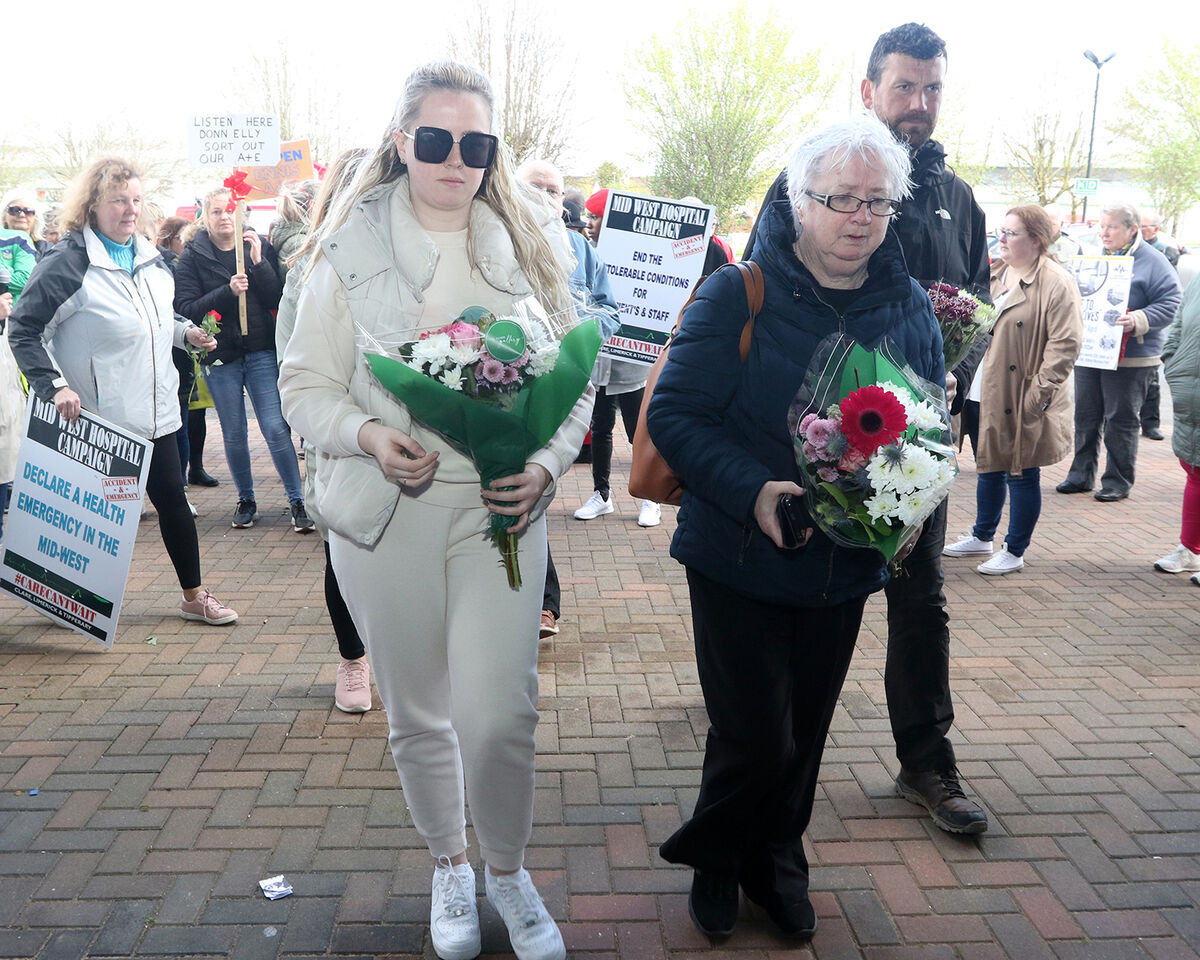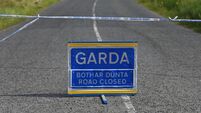Analysis: Medics highlight issues driving patients and families to take to the streets

Mid-West Hospital Campaign protest at UHL Limerick on Saturday April 13, 2024. Pictures: Niamh Griffin Health Correspondent
What do healthcare workers think about Government and HSE plans to tackle hospital overcrowding — as nurses face an estimated 200 vacancies at UHL and consultants struggle to find space for patients in many sites?
Christine O’Malley, formerly a geriatrician in Nenagh Hospital for almost 25 years, campaigned against closing regional emergency departments in 2009, predicting it would lead to overcrowding in Limerick.
“Fifteen years ago, people said to me ‘there, there, it will be fine’ — but it wasn’t fine,” she said.
Dr O’Malley feels now it is time to get on and fix those mistakes. “It is a really good thing that the minister and the head of the HSE came to the Midwest and that they made announcements which are an attempt to start recognising the problems, and that they absolutely recognise the bed capacity is a key part of it,” she said.
The Government and HSE plans noted that 108 beds have been added to UHL since 2020, with Health Minister Stephen Donnelly referencing the figure on a visit to Limerick earlier this month.
Dr O’Malley queried this, saying: “That’s the number of beds that were cut when they did reconfiguration in 2009 so, 15 years later, he is saying we’ve added them back.”
The latest data on the UHL website shows 535 beds including 51 for children. This is despite a report for the HSE in 2008 recommending that UHL needed 642 then.
A new 96-bed unit opens next year, bringing 71 new beds and 25 to replace older wards.
HSE boss Bernard Gloster said recruitment for that starts this year to eliminate any delays, with in the short-term 16 fast-build beds opening by this winter. Combined, this could see 622 beds by next winter which is still short of the original advice. A second 96-bed block is at planning stages.

Meanwhile, numbers of rehabilitation beds outside the hospital will also increase. Co Clare will see 20 permanent step-down, transition, and rehab beds.
Controversially, a newly-built HSE nursing home in Nenagh is being temporarily repurposed as a rehab unit, to be run privately.
Dr O’Malley said: “There are a lot of question marks about what happens to patients who aren’t going to go to that [nursing home] and patients who are going to go to that unit.”
She warned: “There is potential for this new and surprising service to be a very good service and there is potential for it to be just a waste of beds for everybody.”
Mr Donnelly said these measures follow a 41% increase in staff since 2019, and a 44% increase in funding to €383m.
However, beds remain an issue for the Irish Nurses and Midwives Organisation (INMO). Its data shows more patients without a bed in UHL during the first three months of 2024 than during all of 2014.
INMO assistant director of industrial relations Mary Fogarty warned that the site is like “a warzone at times”.
She told the Oireachtas health committee, who visited UHL last week, that she is aware of “close to 200 vacancies“ in nursing roles, including the equivalent of 21 full-time posts in A&E.
“All manner of patient dignity and privacy can disappear once a patient has been admitted,” she said. “There is no way for our members to carry out care in a safe and timely manner and no way to discuss sensitive health information privately.”
She also hopes the new plans will have a long-term impact. However, she cautioned that “in the past, when specialist teams have been put on site it saw short-term improvements but then when the team went away the hospital has been in the worst period of overcrowding since the INMO began measuring”.
The Irish Medical Organisation (IMO) said what is happening in UHL is a severe example of what is happening around the country.
Emergency medicine consultant Eoin Kelly, a member of the IMO’s consultant committee, said patients come into an environment in many hospitals where there is no space.
“We are left making decisions that other people would find very difficult — moving patients from one area to another to make space for someone who is sicker than a patient who is already with us and less unwell,” Dr Kelly said, adding this happens “with relative frequency”.
This can have serious consequences: “There is lots of research showing that there are increased rates of mortality and morbidity so more people die and have more complications when they spend a long time on trolleys in emergency departments,” he said.
Referring to political comments around UHL recently, he said: “It is disingenuous to direct blame at staff when the problem is lack of space and beds in the hospital system.”















